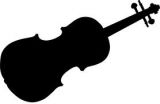- Forum
- General Discussion | Introductions | Off Topic Forum
- Photography General Discussion
- Histogram question
Histogram question
-
 Topic Author
Topic Author
- Tclean95
- New Kid On The Block
-
- Canon EOS Rebel xsi
- Followers: 8
- Posts: 36
-
Points:
0
Post #192639
-

- ZiggyMissy
- New Kid On The Block
-
- Nikon d40
- Followers: 5
- Posts: 28
-
Points:
0
Post #192641
Some cameras only show one histogram, a combination of red, blue, green, and luminance. Some will show all four separately.
The thing to really look for is a peak so far to the left or right that the peak is at either end of the graph.... that indicates either no shadow details (left) or blown-out highlights (right).
The blinking in places is probably telling you that those areas are pure white and will never be able to recover any detail no matter what you do in post.
-

- g1na3
- New Kid On The Block
-
- Nikon D5000
- Followers: 5
- Posts: 33
-
Points:
0
Post #192643
| | | | | |
dark/black | dark grey | middle grey | bright grey | bright/white |
| | | | | |
| | | | | |
If the peak is in middle grey, that means the camera has "registered" the most values from the middle grey part. If the peak is in bright/white, the camera has registered a very bright scene. When highlights are blown, the graph exceeds bright/white and shoots upwards. That's when you lose detail in the highlights. The same goes for black.
An image with a very narrow peak will be low contrast. Contrasty images have both dark and bright areas.
What I use the histogram for, is to check whether I've blown anything (although I use the blown highlights thing as well) and to see if I've got enough signal on the sensor in any given part of the histogram that I want. If I'm shooting silhouettes, then I want much of the graph in the dark area. If I'm shooting snow, I want much of the graph to cover the white/bright part.
-
 Topic Author
Topic Author
- Tclean95
- New Kid On The Block
-
- Canon EOS Rebel xsi
- Followers: 8
- Posts: 36
-
Points:
0
Post #192647
ZiggyMissy wrote: Histograms are basically pixel counts. If they peak on the left, the image is counting a lot of dark pixels. If the histogram peaks in the middle, your exposure means everything is close to 'good' exposure. To the right, it's overexposed. This is just a guide, however. A single, small red rose with a black black ground will show a histogram far to the right, but the rose might still be properly exposed.
Some cameras only show one histogram, a combination of red, blue, green, and luminance. Some will show all four separately.
The thing to really look for is a peak so far to the left or right that the peak is at either end of the graph.... that indicates either no shadow details (left) or blown-out highlights (right).
The blinking in places is probably telling you that those areas are pure white and will never be able to recover any detail no matter what you do in post.
Ok that makes sense about the blinking! I've noticed that in post. Thanks so much for explaining!
-
 Topic Author
Topic Author
- Tclean95
- New Kid On The Block
-
- Canon EOS Rebel xsi
- Followers: 8
- Posts: 36
-
Points:
0
-

- ZiggyMissy
- New Kid On The Block
-
- Nikon d40
- Followers: 5
- Posts: 28
-
Points:
0
Post #192654
If you can zoom into a portion of an image in your camera's LCD while viewing the histogram, see if it changes as you zoom in. If they do, then you're seeing the histogram for just that portion of the image. This is a great feature to have, and can really help you narrow down 'proper' exposure while in the field as opposed to trying to correct it in post.
"Blown-out highlights" means the camera has recorded pure white... no colors and no details. It's white, and the only thing you can do with white in post is to make it gray (unless you want to edit something else in instead). Darkening the image in post will not gain anything in that area except a sick-looking gray in a very dark image.
-
 Topic Author
Topic Author
- Tclean95
- New Kid On The Block
-
- Canon EOS Rebel xsi
- Followers: 8
- Posts: 36
-
Points:
0
-

- effron
- Newbie
- Followers: 1623
-
Points:
129640
Post #192681
www.cambridgeincolour.com/tutorials/camera-metering.htm
Why so serious?
-
 Topic Author
Topic Author
- Tclean95
- New Kid On The Block
-
- Canon EOS Rebel xsi
- Followers: 8
- Posts: 36
-
Points:
0
Post #192688
effron wrote: You could use a good read.....
www.cambridgeincolour.com/tutorials/camera-metering.htm
Thank you, I will check it out.
-

- johns1947
- New Kid On The Block
-
- Canon EOS 50D
- Followers: 28
- Posts: 27
-
Points:
0
-

- Henry Peach
- Apprentice
-
- I currently use a 5DII or Sony Nex-3 most of the time.
- Followers: 50
- Posts: 2925
-
Points:
16
Post #192871
-

- johns1947
- New Kid On The Block
-
- Canon EOS 50D
- Followers: 28
- Posts: 27
-
Points:
0
Post #193220
We used to 'meter twice' and Still bracket the exposure on important shots.
What we need to do today is pay attention to the highlights and shadows on your monitor,
Watch your highlights, in particular, and if you're close, it's salvageable.
You have enough clues with the highlight alert, the histograms, and multi modal metering, disasters should never happen.
Gone is the suspense and near heart stopping thrill of seeing that 'contact sheet', three days, and 600 miles after the shoot.
-

- johns1947
- New Kid On The Block
-
- Canon EOS 50D
- Followers: 28
- Posts: 27
-
Points:
0
Post #193250
Canon has several free software routines they bundle with their camera’s that (imho) are excellent and easy to use. They also have free ‘classes’ to assist learning to use the cameras and software at Canon Image Gateway: www.cig.usa.canon.com Tips on things like getting White Balance, adjusting highlights, how to understand and use the histograms, etc.
you'll probably have to register to get into this site, but you should be able to access it from the 'registration' page for your camera.
This is a dynomite resource,... USE IT.
-

- Henry Peach
- Apprentice
-
- I currently use a 5DII or Sony Nex-3 most of the time.
- Followers: 50
- Posts: 2925
-
Points:
16
Post #193348
johns1947 wrote: We have it SOOOO much easier today, than it was 30 years ago.
This statement has been consistently true since Niepce.
"It is not easy for the new generation of photographers to understand the difficulties through which the beginner of thirty years ago had to grope his way. To a modern dry plate worker it would be like listening to a foreign language if I told him of some of the difficulties of the collodion process. What does he know of comets, oyster-shell markings, and lines in direction of the dip? In apparatus, also, the early photographers had to put up with what they could get, and what was not always very convenient for use." -HP Robinson commenting on how easy dry plates were compared to wet plate photography. Imagine what they thought when roll film came along.
The interesting thing is that even though the technical side has consistently become easier over the last 150+ years it's still just as hard today as it was way back then to create a truly intriguing photograph.
- Forum
- General Discussion | Introductions | Off Topic Forum
- Photography General Discussion
- Histogram question
Latest Reviews
The Olympus Pen E-P7 is an affordable micro four thirds mirrorless camera with 4K video capabilities, a 20.3MP sensor, and 121 focus points, making it a solid entry-level camera for beginners.
The Panasonic G9 II is a 25.2-megapixel micro four thirds camera with numerous features that make it punch out of its weight class, like 779 AF points, 5.8K video, and weather sealing.
The Fujifilm XT5 is a 40MP mirrorless camera capable of 6.2K video at 30p. With those specs, it’s an ideal choice for photographers needing a camera to pull double duty for imaging and video.
The Canon EOS R100 is an entry-level mirrorless camera introduced in 2023. But just because it’s an entry-level camera doesn’t mean it’s a bare-bones camera. Find out why in this review!
Forum Top Posters
-
1Scotty 8 posts
-
2TCav 6 posts
-
3Ruby Grace 6 posts
-
4Nefarious 3 posts
-
5CharleyL 3 posts
-
6Jim Photo 3 posts
-
7Roger Lang 3 posts
-
8ShutterPal 3 posts
-
9James L 2 posts
-
10Clark Guay 2 posts
Latest Articles
The best photography jobs right now are a mix of tried-and-true gigs like wedding photography and new jobs highlighting AI’s capabilities, travel, and videography.
The Olympus Pen E-P7 is an affordable micro four thirds mirrorless camera with 4K video capabilities, a 20.3MP sensor, and 121 focus points, making it a solid entry-level camera for beginners.
Starting a photography business is one thing; sustaining your business over a long period of time is another. Use the tips in this professional photography guide to build something with longevity!
The Panasonic G9 II is a 25.2-megapixel micro four thirds camera with numerous features that make it punch out of its weight class, like 779 AF points, 5.8K video, and weather sealing.
Cinematic photography is an interesting genre that combines photographic and videographic skills along with effective storytelling techniques. The result? Highly impactful images!
Newborn photography requires skill, the right gear, and a lot of patience. This beginner’s guide discusses critical topics that will help you be more prepared for before, during, and after the shoot.
To fill the frame means to expand the footprint of the subject in your shot. Get in close, zoom in, crop the image, or use other techniques to bring the subject to the forefront.
With these simple yet effective beginner photography tips, you can avoid some of the common mistakes beginners make and get improved results with your images.














